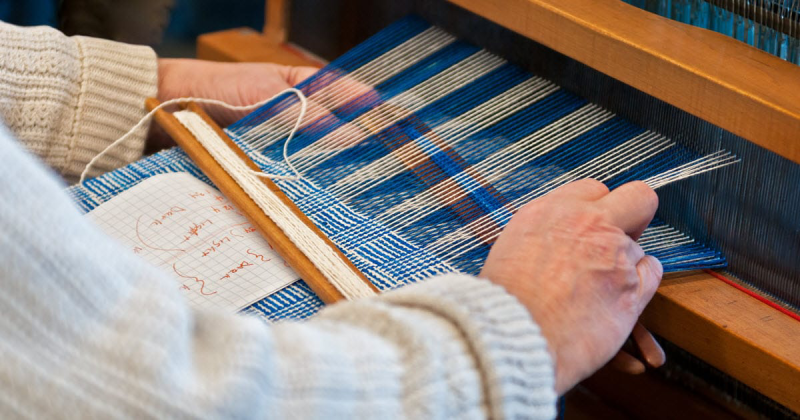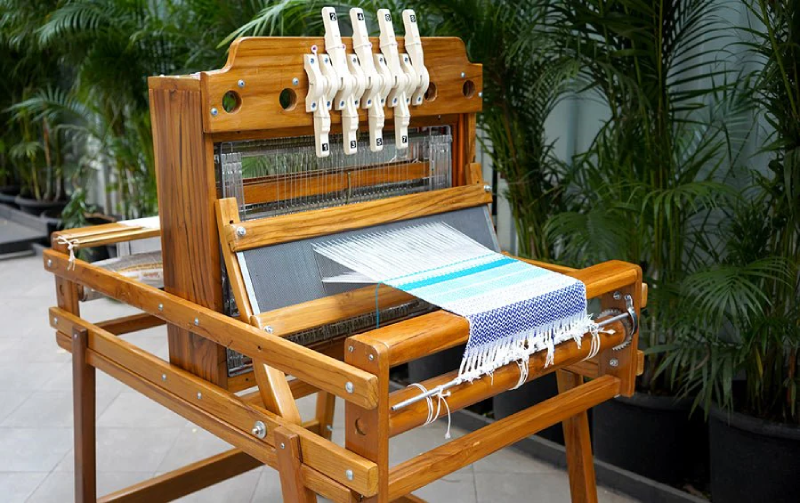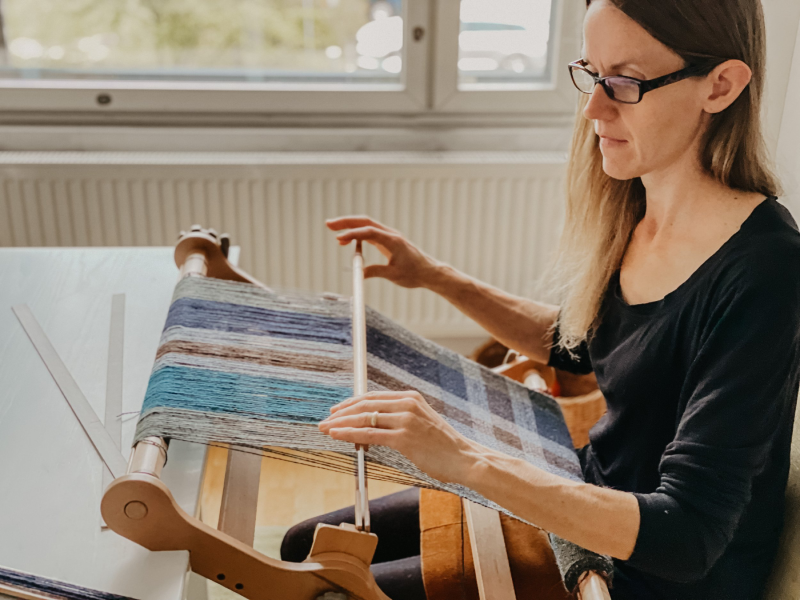If you belong to South Asia, especially India, Gandhiji, and his famous handloom is nothing new to India, as the nation has been blessed with a century-old tradition of making clothes by spinning and weaving handloom to eventually become a popular craft for most of the rural population as their livelihood, till today.
However, only some people know there are different types of weaving looms, including handloom, frame loom, and back strap loom. Even those who want to pursue a hobby in this sector still need clarification when choosing one of the many options available. Let us delve into the various types of looms you need to be aware of.
What is a loom?

A loom is a unique mechanism or tool for weaving yarn and thread into textiles. Looms usually come in various sizes, from substantial free-standing hand looms to tiny hand-held frames to vast automatic mechanical tools. A loom can also be linked to an electric line connection, like a wiring loom.
The key role of looms is to attach the twisted threads under pressure to enable the progress of interconnecting the wool strands. The loom’s system and exact form can differ in some ways; however, they still perform their basic utility.
Plenty of options

-
- Handlooms
This complicated process is counted as the first and foremost type of loom process, which also uses the traditional method without electricity. The process is complex, requiring patience, skill, and manual strength. It involves two sets of yarn: the warp, which refers to the length, and the weft, which refers to the width. - Back strap looms
Famous for their sense of portability as one end of this loom type is secured around the waist of the weaver, and the other is attached around a fixed thing like a door, stake, or tree while you can even customize the pressure applied by just bending back. - Ground looms
Horizontal ground looms permit the warp threads to be linked between a couple of rows of pins, which requires the weaver to bend forward to perform the task easily. Therefore, pit looms with warp chained over a ditch are innovated to let the weaver have their legs positioned below and at the right level of the loom. - Frame Looms
Frame looms most likely have similar mechanisms to ground looms. The loom is primarily made of rods and panels tightened at the right angles to construct a shape like a box, which makes it user-friendly and more manageable. This type of loom is being utilized even now due to its economic stability and portability. - Table looms
These are smaller and more portable than floor looms but additionally more complex than the other small looms in this list. They are made to be used on top of a table or on a stand. While you can get a table loom with more than 8 shafts, the most ordinary types have 4 or 8.
But this has more advantages, as you have more scope for sharpening your skills. It also gives you more control with comfort and better rhythm to create better-looking patterns. - Rigid-heddle loom
A rigid-heddle loom is a loom for a beginner as it also offers a lot regarding patterning to a professional weaver through hand manipulation of the warp and weft. This one typically features one harness, with its heddles attached to the harness. The yarn or thread goes in a parallel manner all the way through a heddle and via the gap between the heddles. Rigid-heddle looms are portable in terms of stability, as they can be used with or without a stand. - Inkle looms
Inkle looms are used to weave narrow garbs of textiles in braided bands such as straps and belts. The portability feature gives it a new sense as it requires minimal materials to start weaving on an inkle loom. Ultimately, you will only need the loom, your choice of yarn, and a weaving shuttle.
Known for being an excellent loom for beginners, experienced weavers also utilize them to form complex patterns. The bands can serve as purse straps, dog collars, leashes, and many other items. They can also be used to create bigger and more complex projects like bags, cushion covers, placemats, and many other things. Add carding to the list as well, and the possibilities are endless. - Tapestry loom
This type of loom is used to weave arrays of plenty of shapes and sizes. As there are various loom sizes available, there is also a wide variety of collections you can curate with them, ranging from jewellery to purses to rugs and many more.
Interestingly, some tapestry looms allow you to change the sheds, but others do not. Now, what is a shed? It is the space between the upper and below warps on a loom. Sheds are formed using heddles, looped wires or cords in a loom, and heddle bars, which are bars attached to grooves to separate the threads in your loom.
If the weaver manages to control the shed, it can quite well speed up the weaving process. However, many people weave everything by picking the shed. While it is not needed for every project, shedding devices can be very helpful for most of them.
- Handlooms
How to choose the suitable loom

Skillset: This is the crucial factor you should consider while buying a loom, as there are plenty for different levels, some for beginners, the rest for intermediates, and complex ones for professionals.
If you are looking for a small but complete loom to continue your hobby on the go, try a small loom first, such as a rigid-heddle, inkle, or table loom. If you already love this art form and want to delve into the extraordinary process of weaving, then you will feel more comfortable investing in a large floor loom or, even better, a complex table loom.
Type of fabric: If your interests lean towards tapestry, then a frame loom or larger tapestry loom is the perfect choice. If you are interested in creating large artwork, a floor loom is the best option. If you are just looking forward to creating small and minimal pieces, then you can consider table or rigid heddle looms. However, do not forget that you can weave most small pieces on large looms.
If you are ready to make elaborate patterns, you can look into buying a floor loom or a table loom with four or more shafts. Inkle looms can easily make bands and belts.
Accommodation: The golden rule is that if you are looking for functionality and durability at once, do not worry; you might still have options left. Inkle and rigid-heddle looms are great beginners’ looms, while experienced ones should opt for a floor loom if they have ample space; otherwise, go for an eight-shaft table loom if they do not.
Wrapping up
While you take weaving as a hobby or want to pursue a career, doing the appropriate research and analysing all its associated factors is quite necessary. We are sure you will weave your way through all the hurdles. Happy weaving!




